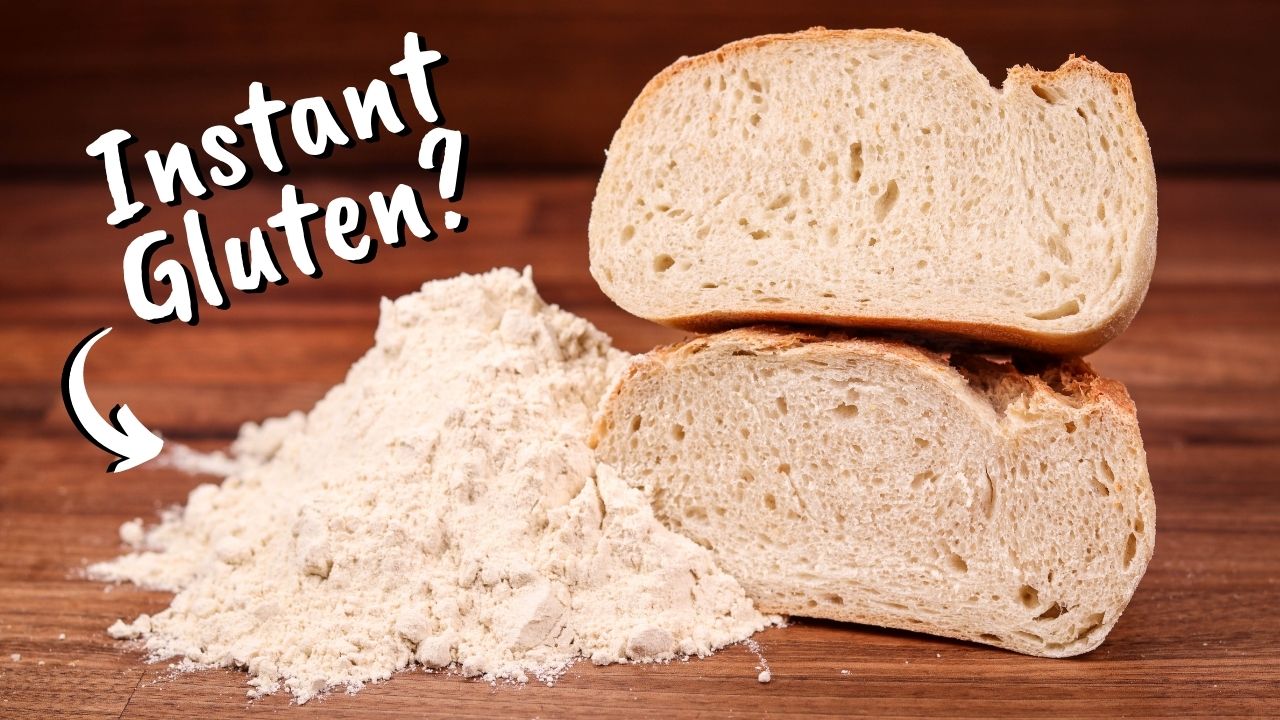What is vital wheat gluten?
It is a great ingredient for people who do not have high protein flour available. I have made a whole video about flour protein content which you can watch in the Principles of Baking playlist along with many more useful videos.
In this video I will explain what vital wheat gluten is and how to use it in breadmaking.
Vital wheat gluten is made by hydrating wheat flour and turning it into glutenous dough. It is then processed to extract everything from it except the gluten. Then the gluten is dried and powdered to become vital wheat gluten which when water is added turns back into gluten.
You can try making pure gluten as a quick experiment. Make a dough, knead it, and then wash it in water. After all the starch is washed off you will be left with a bouncy ball of pure gluten. It is quite freaky. This is also the process of making seitan which can also be made from the vital wheat gluten powder.
So, there is no magic to this ingredient. It is simply extra gluten that can be added to weaker flour to make it stronger.
Vital wheat gluten is generally around 80% protein which means that 1g (0.035oz) of it equals 0.8g (0.028oz) of protein. Regular flour can range anywhere between 6% up to and past 16%.
What would be considered ‘weak’ flour is generally anything below 10%. Such low protein content is great for cakes and pastry, but not for breadmaking.
To increase the protein content of four by 1% using vital wheat gluten we must add 1.5g (0.053oz) of it per every 100g (3.53oz) of flour. I know that would equal 1.2%, but as you will see in the video it is closer to 1%.
How to calculate the required amount
First, find out by how many percent you need to increase the protein content of your flour. The flour I used was 9.7% protein and I wanted it to match the strong flour that I normally use at 13% protein. It means I must increase it by 3.3%.
Knowing that 1.5g (0.053oz) of gluten can increase the protein content of 100g (3.53oz) flour by 1% we need to multiply the 1.5g by our required percentage. 1.5 x 3.3 = 4.95. I rounded this up to 5.
So, 5g (0.17oz) of vital gluten will raise the protein content of 100g (3.53oz) flour by 3.3%.
The recipe I used had 150g (5.3oz) flour. Next, we divide the total flour by 100. 150 : 100 = 1.5. This tells us how many times we must multiply the 5g (0.17oz).
5g (0.17oz) x 1.5 = 7.5g (0.26oz). This tells us how many grams of vital wheat gluten must be added to raise the protein content of 150g (5.3oz) flour by 3.3%.
This formula is universal and will work with any recipe. Simply change the numbers accordingly.
The recipe
150g (5.3oz) flour (9.7% protein)
93g (3.3oz) water
3g (0.1oz) salt
2g (0.07oz) instant dry yeast or 2.4g (0.085oz) active dry yeast or 6g (0.21oz) fresh yeast
7.5g (0.26oz) gluten
The other two breads had the same quantities of ingredients except the gluten which was only used in this recipe.
Adding the gluten made the dough much more workable and less sticky. It kept its shape well. Instead of spreading out sideways it rose vertically. Quite like the 13% protein dough.
I would suggest sprinkling the gluten powder on top of the flour instead of adding it directly to the liquid. If you add it to the water it turns into gluten instantly and although it has never caused me any issues, it may become lumpy. So, it’s better to be safe than sorry.
Watch the video here



